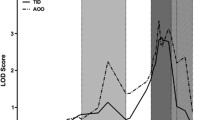Abstract
Two mouse strains DBA/2J and C57BL/6J are heteromorphic with respect to the electrophoretic mobility of at least 8 enzymes and the β-hemoglobin chain. The genotype of DBA/2J for these markers is: Es-1, Es-3, Gpd-1, Gpi-1, Id-1, Mod-1, Pmg-1, Dip-1 and Hbb; and of C57B1/6J: Es-1, Es-3, Gpd-1, Gpi-1, Id-1, Mod-1, Pgm-1, Dip-1 and Hbb. Electrophoresis on tissues of interstrain hybrids will show the two parental bands and additional hybrid bands if the enzyme is a polymeric structure. In specific locus mutations which result in loss of activity (deletions, nonsense mutations), the hybrid resembles the nonmutated parent. If the mutation results in a change in electrophoretic mobility, some of the bands on the gel will either run faster or slower compared to the hybrid bands in a normal F1 animal.
Fifty DBA/2J males were irradiated with γ-rays from a Co60 source with two doses of 500 R at 24-h intervals at a dose rate of 95 R/min. After this irradiation the males were sterile for approximately 3 months. After the males regained their fertility, they were continuously mated to C57BL/6 females. Thus far somewhat over 2600 animals have been tested and four new mutations detected, giving a frequency of approximately 1.7×10−4 mutations per locus per generation. The four mutations are: two independent mutations at Hbb, one at Mod-1 and one at Id-1.
Zusammenfassung
Die beiden Mäusestämme DBA/2J und C57BL/6J sind heteromorph hinsichtlich der elektrophoretischen Mobilität von mindestens 8 Enzymen und der β-Hämoglobinkette. Der Genotyp für DBA/2J-Mäuse für diese Marker ist: Es-1, Es-3, GpD-1, Gpi-1, Id-1, Mod-1, Pgm-1, Dip-1 und Hbb; der für C57BL/6J-Mäuse ist: Es-1, Es-3, Gpd-1, Gpi-1, Id-1, Mod-1, Pgm-1, Dip-1 und Hbb.
Bei elektrophoretischen Untersuchungen des Gewebes von Hybriden der beiden Stämme findet man die beiden Banden der Eltern und eine zusätzliche Hybridbande, wenn das Enzym von polymerer Struktur ist.
Bei Mutationen vom „specific locus type“, die aufgrund von Deletionen oder „nonsense mutations“ einen Aktivitätsverlust zur Folge haben, gleicht der Hybrid dem mutierten Elternteil. Wenn die Mutation eine Änderung der elektrophoretischen Mobilität zur Folge hat, werden einige der Banden auf dem Gel entweder schneller oder langsamer sein als die entsprechenden Hybridbanden bei normalen F1-Tieren.
50DBA/2J-Männchen wurden im Abstand von 24 h mit 2 Dosen von 500 R γ-Strahlen mittels Co60 bestrahlt und zwar mit einer Dosierung von 95 R/min. Nach dieser Bestrahlung waren die männlichen Tiere für ca. 3 Monate steril. Nach Rückerlangung der Fertilität wurden die Männchen kontinuierlich mit 50 C57BL/6-Weibchen gepaart. Bisher wurden etwas mehr als 2600 Tiere getestet, wobei 4 neue Mutationen festgestellt wurden. Dies entspricht einer Mutations-häufigkeit von ca. 1,7×10−4 per locus/Generation. Bei den 4 Mutationen handelt sich um zwei unabhängige Mutationen aus Hbb, eine aus Mod-1 und eine aus Id-1.
Similar content being viewed by others
References
Lyon, M. F., Morris, T.: Gene and chromosome mutation after large fractionated or unfractionated radiation doses to mouse spermatogonia. Mutation Res. 8, 191 (1969)
Russell, W. L.: The effect of radiation dose and fractionation on mutation in mice. In: Repair from genetic radiation damage (F. H. Sobels, Eds.), p. 205. Oxford: Pergamon 1963
Taylor, B. A.: Genetic relationships between inbred strains of mice. J. Heredity 63, 83 (1972)
Valcovic, L. R., Malling, H. V.: An approach to measuring germinal mutations in the mouse. Env. Hlth Perspect. 6, 201 (1973)
Author information
Authors and Affiliations
Rights and permissions
About this article
Cite this article
Mailing, H.V., Valcovic, L.R. A biochemical specific locus mutation system in mice. Arch. Toxicol. 38, 45–51 (1977). https://doi.org/10.1007/BF00293662
Received:
Issue Date:
DOI: https://doi.org/10.1007/BF00293662




